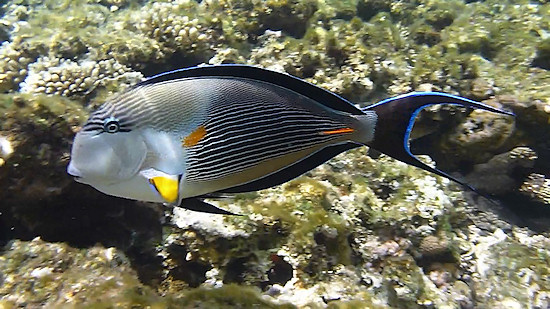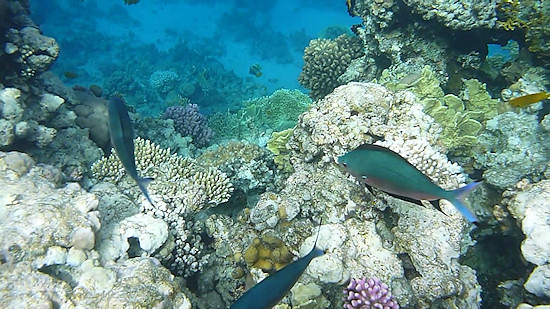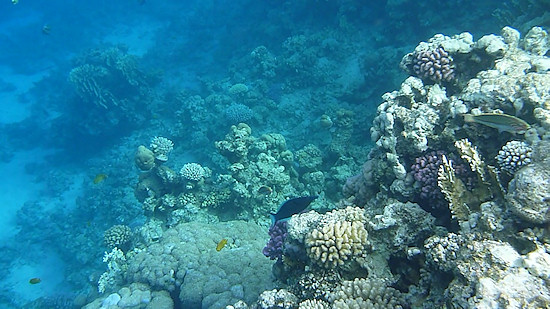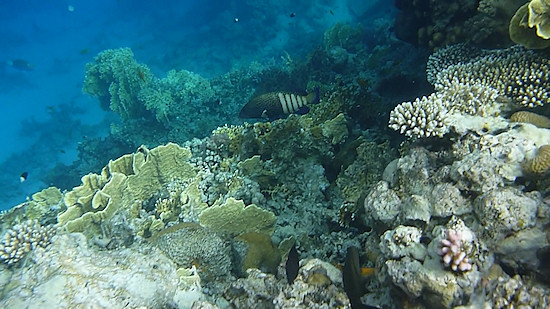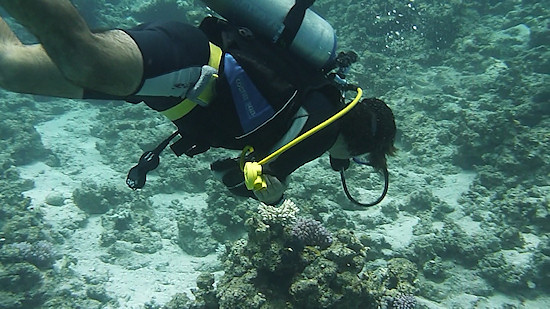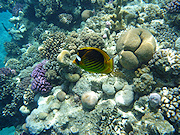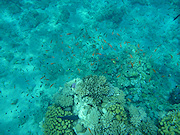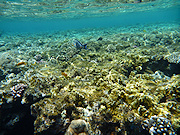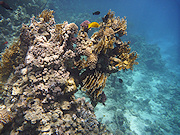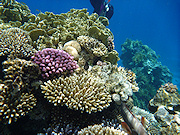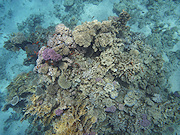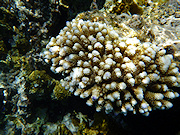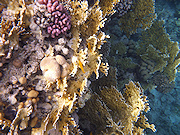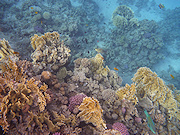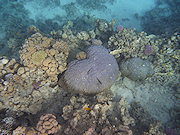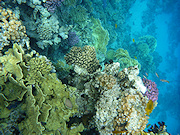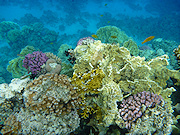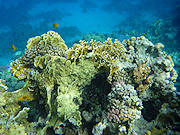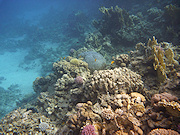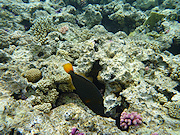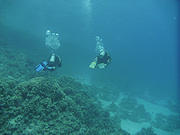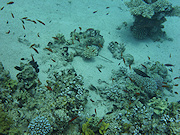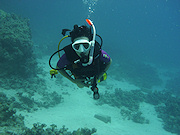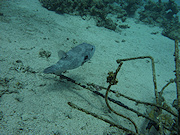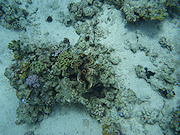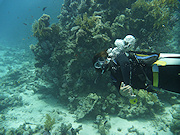Underwater cameras test 2010
4. Panasonic Lumix DMC-FT2
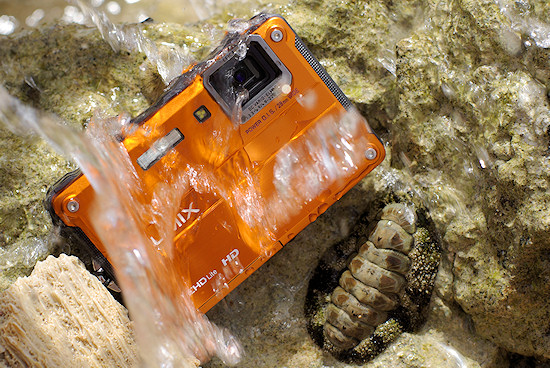 |
After a very successful debut on the market of point and shoot underwater cameras, the Panasonic concern decided to continue the production of the Lumix FT series and one year after presenting the FT1 they unveil its successor, the Lumix DMC-FT2 model.
According to the latest trends, in the FT2 we got an enhanced 14 Mpix sensor. Although the new image processor was added as well they didn’t manage to keep the speed of the burst mode from the FT1 - it decreased to 1.8 fps. Panasonic decided to improve the resistance of its camera and, as a result, the device weighs slightly more (4.5 g more to be precise) and the dimensions of its casing were increased too. The Lumix DMC-FT2 comply with the requirements of waterproof and dustproof norms being equivalent to the IP68 standard which means you can take photos at the depth of 10 m for 60 minutes. The camera also passed the test of free fall from 2 m on a plywood 3 cm thick which is in accordance with the MIL-STD 810F Method 516.5-Shock shock-resistance measurement method
Compared to its predecessor, the camera features one more difference – it reads SDXC cards. The lens’s parameters and the size and resolution of the LCD screen remained the same. We can still record videos in the HD 1280×720 pixels resolution at the maximum speed of 30 fps and using AVCHD Lite or Motion JPEG compression options.
Please Support UsIf you enjoy our reviews and articles, and you want us to continue our work please, support our website by donating through PayPal. The funds are going to be used for paying our editorial team, renting servers, and equipping our testing studio; only that way we will be able to continue providing you interesting content for free. |
- - - - - - - - - - - - - - - - - - - - - - - - - - - - - - - - - - - - - - - - - - - - - - - -
Design and build quality
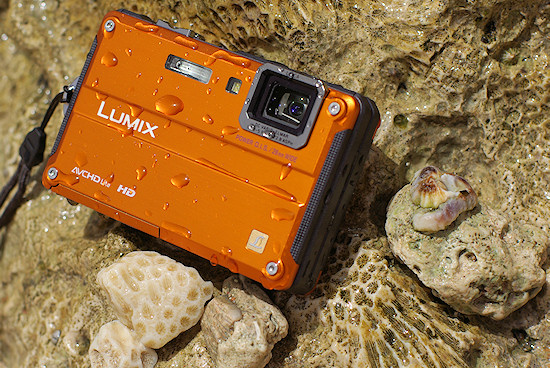 |
If you want to describe how the Panasonic FT2 is built it would be enough to rewrite everything from the test of its predecessor. There are really just few changes made but evidently the constructors chose wisely and all of them were to the camera’s advantage.
The first thing that sticks out is the redesigned front panel where we see a lengthwise hollow which certainly makes the camera look more attractive. The casing is still made of brushed aluminium, electro coated, in silver, blue, yellow or orange. All elements of the casing fit perfectly so you can’t find here any loose pieces or creaking plastics. It is true also when it comes to the buttons, which are very solidly set and don’t move sideways.
The producer used two sealed covers for a memory card, a battery and ports. Both have special blockades to guarantee the waterproof quality up to 10 m.
| Memory card and battery | Ports |
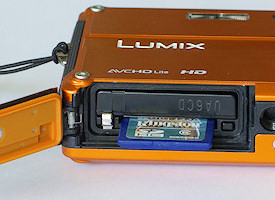 |
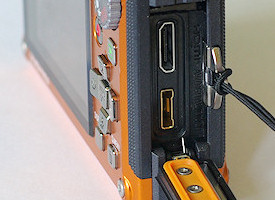 |
The layout of the buttons practically didn’t change, compared to the older model. The upper panel features an on/off power button, a shutter release and a rocker switch for operating the zoom which replaced an uncomfortable slider we criticized so much in the last year’s test of underwater cameras.
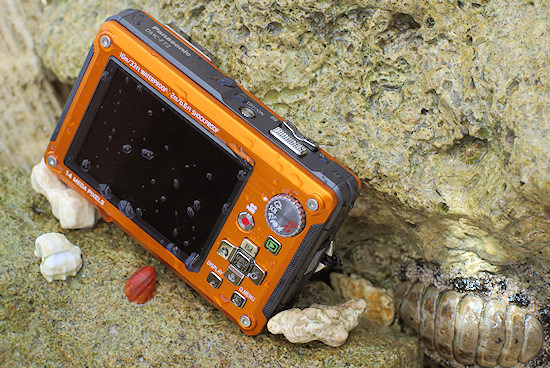 |
At the back, we will find exactly the same buttons as in the case of the FT1. A small change was made, though, when it comes to the position of the video recording button and playback button. The latter is now on the right.
You could end this subsection here because the Panasonic FT2 offers us identical directional double duty buttons which allow you to change the exposure compensation, the self timer, the flash and selecting macro setting. There are also the DISPLAY and Q.MENU keys which are responsible for changing information displayed on the screen and bringing up a toolbar across the top of the LCD screen, allowing the user to quickly tab through options for adjusting some parameters. The list of controllers can be ended by the selection wheel, also known from the FT1 model, which enables you to choose the following modes:
- Intelligent Auto – automatic scene recognition,
- Normal Picture – allows you to set some exposure parameters on your own,
- Sport,
- Snow,
- Beach and surf,
- SCN – scenes mode,
- Clipboard.
Use, cleaning, wear and tear
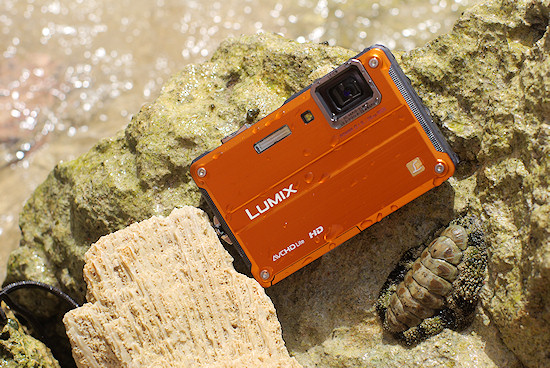 |
We must admit the Lumix FT2 fares the best of all the five tested cameras when it comes to its operation. Although, as in the FT1, we still must cope with removing the salt from grooves in the brushed aluminium and from the crack between the LCD screen and the casing, the brush included in the box is a great help. Of course rinsing the camera with fresh water immediately after getting out of the sea eliminates all inconvenience very efficiently.
If the FT2 didn’t escape the mistakes of its older brother, why the opinion about its usage is so positive? A protective silicon jacket, also included in the box, is the answer.
Panasonic Lumix FT2 in a protective silicon jacket |
You can put it on very easily and its functionality was so great that we put it off only when we had to copy the pictures, recharge the battery or rinse the camera. Beside the excellent protection against scratches, sand beach and shocks the silicon jacket guarantees that the camera won’t slip out of wet hands – we don’t have to worry about accidental dropping or scratching the FT2 during everyday use.
As a result, after a week of intensive testing we could hardly find any significant wear and tear marks on the camera. Only slight scratches were visible. You don’t have to think about the danger of scratching even if you put the Lumix the LDC screen down. The thickness of the jacket is such that the window protecting the monitor doesn’t touch the ground – you won’t damage the LCD screen in a significant way.
Underwater usage
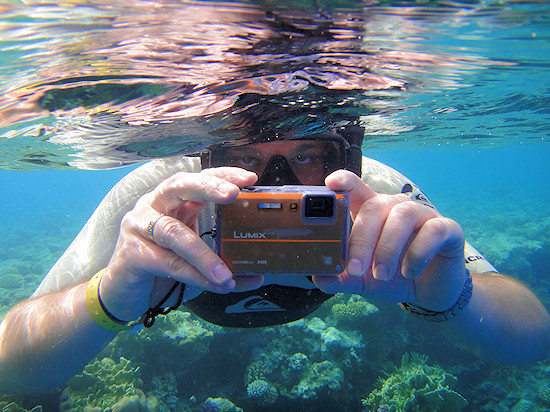 |
Underwater usage is the next category in which the FT2 simply outclasses its rivals. Even its predecessor was an example to follow and in the case of the newer model one of the slip-ups of the older version has been eliminated. We think here about that unfortunate zoom slide which left a lot to be desired. In the new Panasonic a much more comfortable key was used in the form of the rocker switch with two contacts below. When you move the switch to the left you decrease the focal length, when you move it to the right, you increase it. Such a solution is very comfortable but, although we don’t have any serious reservations here, it’s worth paying attention to the fact that it is positioned very close to the shutter release. People with massive hands might experience some problems here. Apart from that, in the video mode the zoom change is much slower than in the photo mode which might be irritating for less patient users.
The next and already mentioned difference, when you compare the tested lens to the FT1, is the change of position of the video mode and preview buttons. Because of that change the start of the video recording is even more comfortable - the appropriate button was moved away a bit from the side panel and now is right under your thumb.
The producer didn’t forget about a wrist strap with a clasp so praised by us in the previous test. Because of that simple solution we don’t have to worry that the camera will slip out of our hand during swimming and will go down to the sea bed.
When it comes to the underwater thematic modes nothing changed. Exactly as in the FT1 we can select from “BEACH AND SURF” mode, nor very fortunate name by the way, which we can use up to 3 m, and “UNDERWATER” mode for greater depths. The producer depended on the FT1 construction to a significant extent and the announcement which appears after choosing the “UNDERWATER” mode is the proof of it. It says that at three meters and deeper you should use an optional waterproof sleeve. The same warning was displayed in the FT1 but, as you remember, it was waterproof only up to 3 m. The FT2 allows us to dive up to 10 m so this announcement is out of date a bit.
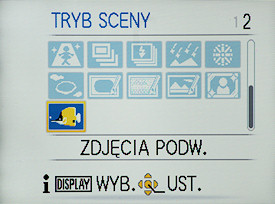 |
The „SCN” mode, which can be chosen using the mode selection wheel, saves the last selected option. If you go swimming it’s good to attribute “UNDERWATER” option to it, so you can switch quickly between underwater modes by turning the mode wheel – under the icon of the coconut palm you can find the “BEACH AND SURF” mode available there. When you add the dedicated video recording button, a quick and accurate autofocus and the lack of any operation lag, we get an undisputed winner of the underwater usage category in this test.
As if it wasn’t enough, the FT2 copes very well with dry land pictures taken in the underwater mode and also offers an automatic scene recognition mode, which we can choose very quickly by turning the mode selection wheel.
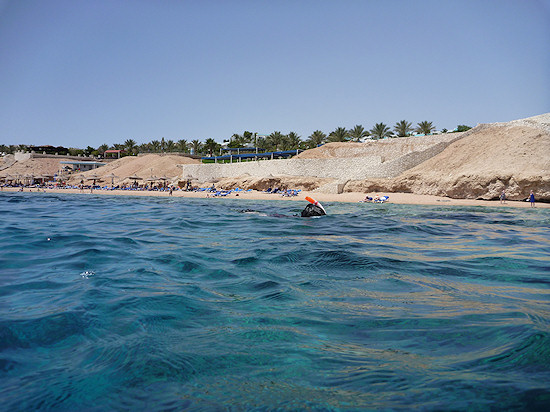 Picture taken above the water surface in the underwater mode |
The LCD screen is not problematic even against bright sunlight. Although the image is not as contrasting as in the case of the Tough 8010 we can’t express any reservations here especially that we haven’t noticed any cast as in the case of the Olympus.
To wrap up praising the work of Panasonic engineers we must mention the fact that the lens is well-positioned - no unwanted fingertips strayed into the frame during the test. The base of the camera meanwhile features the almost centrally-positioned screw thread for attaching the camera to a tripod.. The very well-known possibility of white balance fine-tuning by pressing three times the upper directional button is also something worth our attention.
Underwater pictures and videos quality
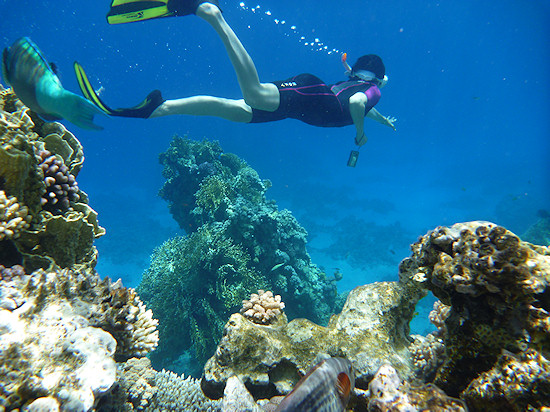 |
As we already mentioned, the Panasonic Lumix FT2 offers us two underwater modes. The first of them – ‘BEACH AND SURF’- is for taking pictures not deeper than at 3 m. The ‘UNDERWATER’ mode should be used at greater depths. The settings work exactly as they did in the case of the Panasonic FT1. ‘BEACH AND SURF’ is a classic underwater mode and all waterproof cameras feature such a thing – its task is to render the colours of the underwater world as realistically as possible. The ‘UNDERWATER’ mode takes into account the fact that some colours disappear at greater depths and it removes blue dominant from photos in order to render the real colour of different objects. It looks as if we all of a sudden pumped out all the water from the sea. It’s worth adding that this mode will come in useful also during surface snorkelling when we want to take pictures of objects situated at e.g. 3 meters down; in such a situation we register the sunlight reflected from these objects which had to travel 6 meters (3 meters to the objects and next 3 meters after being reflected back to the place where the photographer is). The image is as colourless as if we wanted to photograph an object from 1 meter, being 5 meters underwater.
You must remember the fact that removing blue dominant from a photo is often performed by saturating red and orange hues - the colours which are first absorbed by water particles. If an object positioned close by and not very deeply is included in the frame, we should take into account the fact that in such a picture it will be rendered as unnaturally orange-red.
In order not to sound baseless we present several examples of underwater scenes, photographed using the thematic modes described above. We hope it will help to understand in which situations you should use a particular mode.
| "BEACH AND SURF" MODE | ”UNDERWATER” MODE |
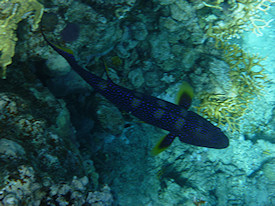 |
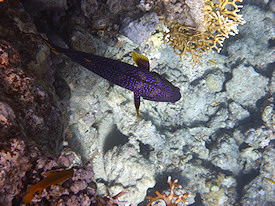 |
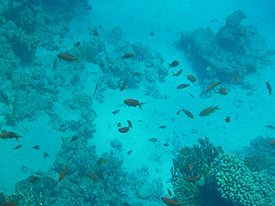 |
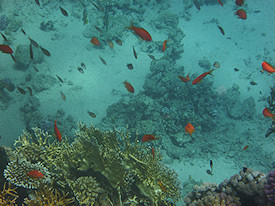 |
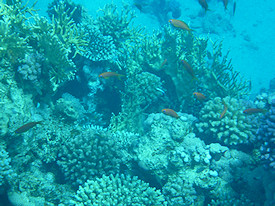 |
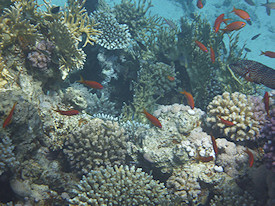 |
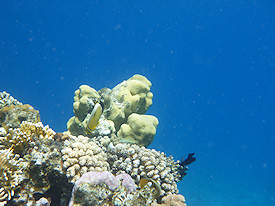 |
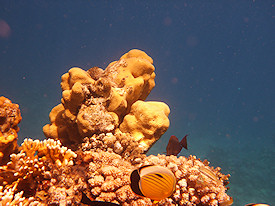 |
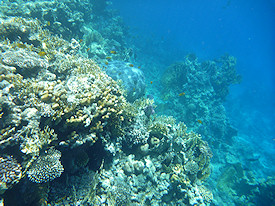 |
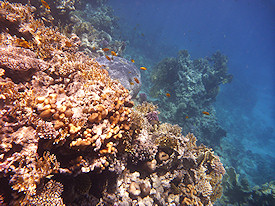 |
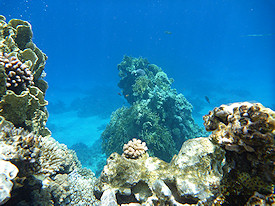 |
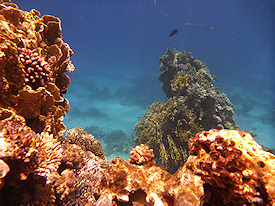 |
If the producer gave us a possibility of using two very efficient underwater modes, we should look closer at the colouring they generate. Exactly like in the case of the pictures from the FT1, we feel a bit unsatisfied here. A shallow coral reef photographed in ‘BEACH AND SURF’ mode is often dominated by blue hues and we must have a lot of luck, positioning ourselves in the right way toward sunlight, to get the right colours in a picture. Unfortunately quite often we are not so lucky and the rays of light, falling toward the lens, make the contrast decrease significantly. As a result we get pale photos and in the case of the Panasonic we got them the most often.
When it comes to the ‘UNDERWATER’ mode, at greater depths the pictures were also far from perfect – especially the colours not so vivid as we would expect. On the other hand, though, the results are much better than those obtained from most of other waterproof cameras, which don’t feature a function eliminating blue dominant at great depths.
The colour of the Red Sea depth in the ‘UNDERWATER’ mode photos seems more similar to that of the greenish Baltic Sea than to the incredible hue of blue and navy blue which surrounds us. After switching to the ‘BEACH AND SURF’ mode we see a lot better colouring but often instead of blue we get turquoise.
In such a situation the fact that we have a smooth 20-degree white balance regulation at our disposal is very helpful – it is easy accessible by pressing three times the upper directional button.
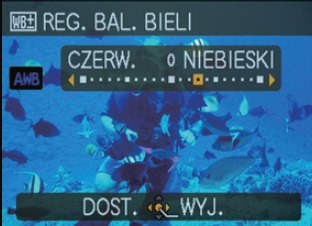 |
It allows to adjust a colour shade of the water to our expectations:
| The range of a smooth white balance regulation |
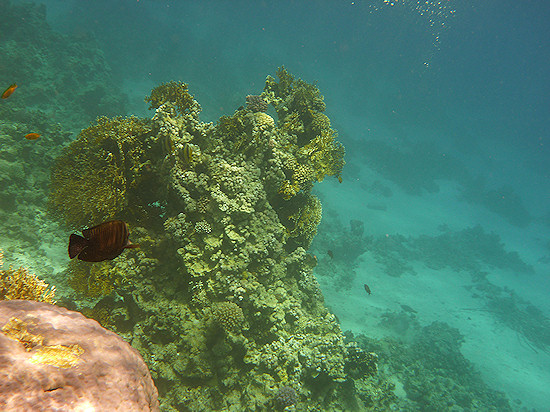 |
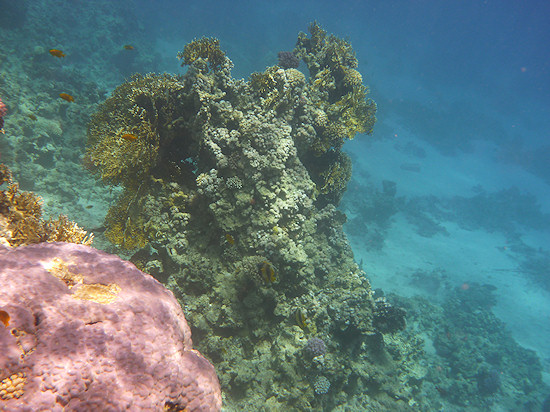 |
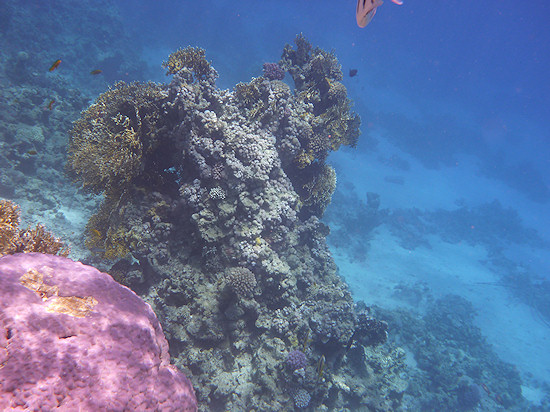 |
Unfortunately the conditions underwater change so quickly we will rarely have enough time and opportunities to use this feature.
Speaking about the quality of pictures we can’t forget about rendering of details. In the case of the Panasonic FT2 it is really at a very high level. In the previous test the Lumix FT1 was the best in this category and, although its younger brother is equally good at it, this time one of the competitors set the standards a bit higher so the FT2 lost the title of the leader in this category. Despite this fact, the pictures from the tested camera look a lot better than these generated by the Fujifim XP10 or the Olympus Tough 8010.
The Panasonic Lumix DMC-FT2, as the only device among all the tested cameras, offers you the possibility of video recording using the AVCHD Lite coding. The recording is performed in HD 1280x720 pix resolution at the speed of 30 fps. The user might choose one of three image quality options: SH (17 Mbps), H (13 Mbps), L (9 Mbps) and you can zoom during recording as well .
After watching several movies, recorded with the tested Lumix, one word comes to your lips – sensation! The image is very detailed and the contrast is high. The colouring is so good that sometimes we had an impression of watching a BBC or Discovery nature series in HD. The designers of the FT2 did great job here because after the test of the older model we had some small reservations concerning colour rendering in videos.
Great depths pictures
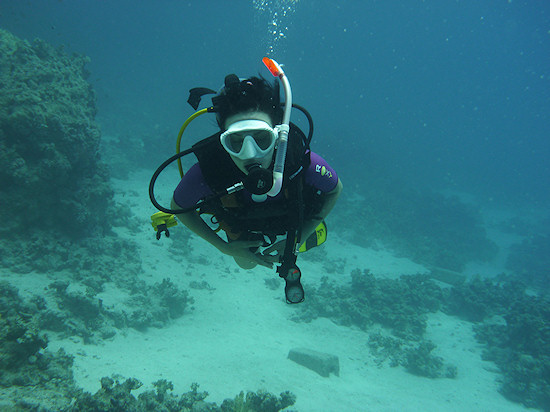 |
The Panasonic FT2 allows us to take photos and record movies up to10 meter under surface. Although, contrary to the Olympus Tough 8010, it doesn’t feature a very useful build-in manometer, it gives us an excellent ‘UNDERWATER’ mode. We wrote about it earlier – the camera is very handy even when you are snorkeling just close to the surface. When we dive at great depths it becomes simply irreplaceable. One glance at the colouring of the last six sample shots in our gallery at the end of the chapter is enough to understand what we mean.
Below 5 meters the Olympus was able to immortalize just shades of blue and sometimes yellow; the Panasonic, on the other hand, allows you to enjoy many other colours – orange, pink and purple among them. Also human skin has a much more natural hue - not blue, anyway. Small wonder that diving with the Panasonic is really great fun.
Summary
As always, we start with pros and cons lists:
-
Pros:
- very solid build quality,
- waterproof up to 10 meters,
- shockproof to falls of up to 2m,
- supports SDXC cards,
- quick camera work,
- very fast and accurate autofocus,
- clasp on the wrist strap,
- silicon jacket included in box,
- cleaning brush included in box,
- one button starts video recording,
- possibility of quick change of underwater modes,
- right camera’s weigh, turns out to be perfect under water,
- functional mode selection wheel,
- easy switch to Auto mode,
- Quick Menu button facilitating the operation,
- two functional underwater pictures modes,
- very good detail rendition in underwater photos,
- sensational colouring of pictures taken at great depths,
- correct colouring of pictures taken on dry land in underwater mode,
- satisfactory colouring of videos recorded on dry land in underwater modes,
- possibility of white balance fine-tuning in underwater modes,
- interesting colouring of pictures in ‘UNDERWATER’ mode,
- very good colouring of underwater videos,
- sensational detail of videos.
- brushed aluminum prone to getting dirty on the front panel,
- pictures prone to contrast loss,
- weak colouring of pictures in ‘BEACH AND SURF’ mode,
- zoom button and shutter release are too close to each other,
- slow change of focal length in video mode,
- confusing names of underwater modes and a mistaken alert after switching on the ‘UNDERWATER’ mode.
Cons:
The Panasonic Lumix DMC-FT2, with the price tag of around 320 $, so it's quite high. If you, however, compare the number of its advantages and disadvantages, you know at once what you buy and what you pay for. The producer offers us a fantastic camera, very polished up when it comes to its functionality and equipped with excellent underwater modes. Additionally, it turns out to be a very good underwater HD video camera.
Nevertheless, we managed to find that proverbial fly in the ointment. The producer, unfortunately, didn’t improve colouring of pictures taken in shallow waters. It’s true that at 10 m we can take incredible photos but if we take them while diving or snorkeling just under surface they will be pale. Already after the FT1 test we have counted very much on an improvement of pictures colouring in the next model but now we see we will have to wait some more. Let’s hope that the constructors working on an FT3 will take it into account, especially that the competitors can deal with it quite well and are pretty advanced in this field.
Sample videos
Sample shots




